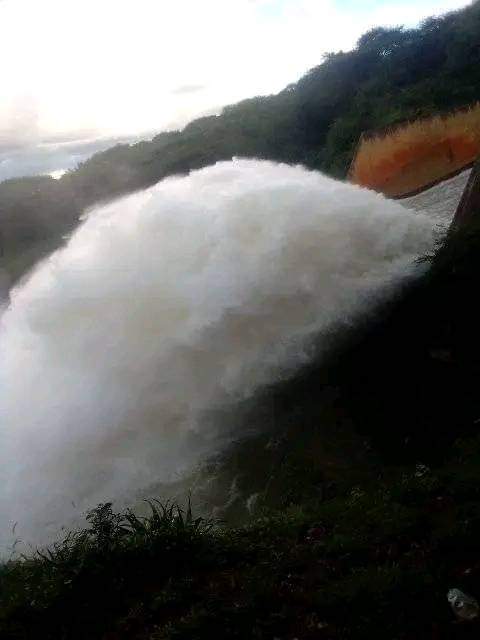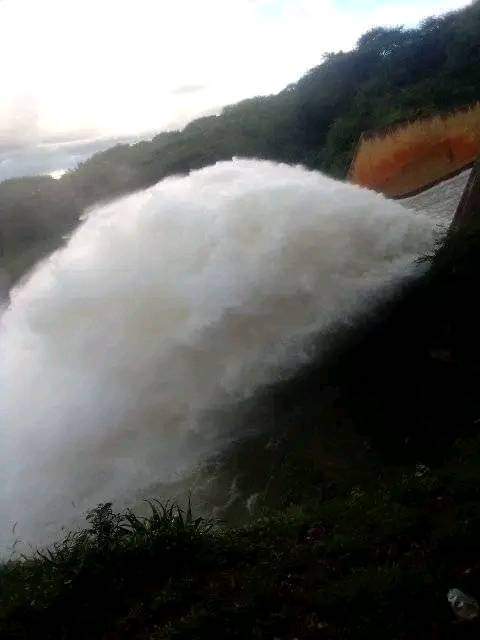The Seven Forks Dams, comprising Masinga, Kamburu, Gitaru, Kindaruma, and Kiambere, stand as critical infrastructural components within Kenya’s water management system. These dams, nestled along the Tana River, have long been instrumental in supporting various sectors, including agriculture, energy generation, and urban water supply. However, with the looming threat of flooding, they now present a dual challenge: balancing their intended functions with the imperative of safeguarding surrounding communities from potential disaster.

As the government issues a flood warning, it underscores the precarious nature of the situation. The dams, swollen by heavy rainfall or inflows from upstream tributaries, face the risk of surpassing their holding capacities. The consequences of such an overflow extend far beyond the dam structures themselves, casting a shadow of uncertainty over the lives and livelihoods of those residing downstream.
Masinga Dam, the largest of the Seven Forks Dams, serves as a primary reservoir for the entire system. Its waters not only cater to electricity production at the downstream power stations but also facilitate irrigation activities in the Lower Tana Basin. However, as water levels rise perilously close to the brim, concerns mount regarding the structural integrity of the dam and its ability to withstand the incoming deluge.
Kamburu Dam, situated downstream of Masinga, plays a pivotal role in regulating water flow for hydropower generation. Yet, in times of excessive rainfall, its spillways may be forced open to alleviate pressure, potentially inundating adjacent low-lying areas. Similarly, Gitaru, Kindaruma, and Kiambere Dams face analogous predicaments, with their reservoirs swelling to critical levels, threatening to unleash torrents downstream.


The implications of a dam breach or uncontrolled spillage are manifold. Immediate risks include flash floods, submergence of settlements, destruction of infrastructure, and loss of lives. Furthermore, the inundation of agricultural lands could lead to crop damage and food shortages, exacerbating the socio-economic woes of already vulnerable communities.
Mitigating the impending crisis necessitates a multi-faceted approach. Firstly, proactive measures must be taken to monitor water levels in real-time, utilizing advanced telemetry and sensor technologies. Early warning systems can then alert downstream residents well in advance, allowing for timely evacuation and preparation.
Additionally, emergency response protocols should be meticulously devised and rehearsed to ensure swift and coordinated action in the event of a flood. This includes the deployment of rescue teams, establishment of temporary shelters, and provision of essential supplies to affected populations.
Structural interventions may also be warranted to bolster the resilience of the dams themselves. Upgrading spillway capacities, reinforcing embankments, and implementing sediment management strategies can enhance their ability to withstand extreme hydrological events.
Furthermore, fostering community resilience through education and capacity-building initiatives is paramount. Empowering local residents with knowledge about flood preparedness, evacuation routes, and disaster response mechanisms can mitigate the human toll of natural disasters.
However, the mitigation of flood risks associated with the Seven Forks Dams cannot be divorced from broader considerations of water resource management and climate change adaptation. Sustainable watershed management practices, afforestation efforts, and climate-resilient infrastructure development are essential components of a holistic strategy to mitigate the impacts of flooding in the long term.
Moreover, addressing the underlying drivers of climate change, such as greenhouse gas emissions and deforestation, is imperative to curb the frequency and intensity of extreme weather events. International cooperation and solidarity are essential in this regard, as climate change knows no borders and requires concerted global action.
The flood warning issued for residents living around the Seven Forks Dams underscores the urgent need for comprehensive risk management strategies. While these dams have long served as pillars of Kenya’s development, they now pose a looming threat to the very communities they were meant to benefit.
By embracing a holistic approach that integrates early warning systems, emergency preparedness, infrastructure resilience, and sustainable development principles, we can navigate the turbulent waters ahead and build a safer, more resilient future for all.The urgency of addressing the flood warning around the Seven Forks Dams is compounded by the broader context of climate change.
Kenya, like many other countries, is experiencing the effects of a warming climate, characterized by erratic weather patterns, increased frequency of extreme events, and shifting precipitation regimes. These changes have profound implications for water resources management, exacerbating the challenges posed by flood risks.
One of the key factors driving the heightened vulnerability of the Seven Forks Dams to flooding is the phenomenon of intensified rainfall. As climate change disrupts traditional weather patterns, rainfall events are becoming more intense and unpredictable. This leads to sudden surges in water levels, placing immense pressure on dam infrastructure designed to handle more moderate flows.
Consequently, the risk of dams overflowing or spilling over their banks becomes significantly heightened during periods of heavy rainfall.Furthermore, climate change is exacerbating the phenomenon of sedimentation within reservoirs, posing additional challenges to dam management. Increased soil erosion, amplified by deforestation and land degradation, results in higher sediment loads being carried by river systems.
These sediments accumulate within dam reservoirs over time, reducing their storage capacity and increasing the likelihood of overflow during high-flow events. Addressing sedimentation requires holistic watershed management strategies that focus on soil conservation, reforestation, and sustainable land use practices.
In addition to the direct impacts of flooding, the Seven Forks Dams are also vulnerable to cascading effects that can exacerbate the severity of the crisis. For instance, the disruption of electricity generation at downstream power stations can have far-reaching consequences for both urban and rural areas reliant on hydroelectric power. Interruptions to water supply systems can compound the challenges faced by communities already grappling with the aftermath of flooding, further undermining their resilience.
Given the multifaceted nature of the risks posed by flooding around the Seven Forks Dams, a comprehensive and integrated approach to disaster risk reduction is essential. This includes strengthening early warning systems, investing in resilient infrastructure, enhancing emergency preparedness and response capabilities, and promoting sustainable land and water management practices.
Moreover, efforts to address the underlying drivers of climate change, such as reducing greenhouse gas emissions and promoting renewable energy sources, are crucial for long-term resilience building.International cooperation and solidarity play a pivotal role in supporting Kenya’s efforts to address the challenges posed by climate change and flooding.
By sharing knowledge, resources, and best practices, the global community can bolster the resilience of vulnerable countries and communities, ensuring that they are better equipped to cope with the impacts of climate change.The flood warning issued for residents living around the Seven Forks Dams underscores the urgent need for proactive and coordinated action to mitigate the risks posed by flooding in the context of climate change. By adopting a holistic approach that integrates disaster risk reduction, climate change adaptation, and sustainable development principles, we can build a more resilient future for all.
